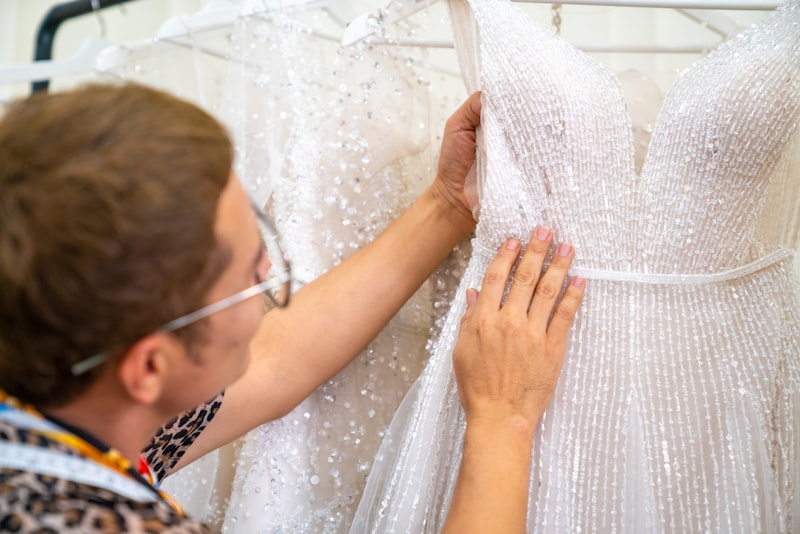Building Long-Term Relationships with Wedding Dress OEM Suppliers
Building Long-Term Relationships with Wedding Dress OEM Suppliers
In the competitive world of the wedding dress industry, establishing strong, lasting partnerships with Original Equipment Manufacturer (OEM) suppliers is crucial for success. This article delves into the significance of developing long-term relationships with wedding dress OEM suppliers, offering valuable insights into the process, benefits, and best practices.
The Importance of Long-Term Relationships with OEM Suppliers
Building long-term relationships with wedding dress OEM suppliers is not only about securing quality products; it’s about creating a mutual understanding and trust that leads to greater efficiency and innovation. Here are several reasons why focusing on these relationships is vital:
- Quality and Consistency: Long-term partnerships foster reliability in the quality of products, ensuring that the wedding dresses meet your brand’s standards consistently.
- Cost-Effectiveness: By developing a solid relationship, businesses can negotiate better pricing structures, which can lead to significant cost savings.
- Adaptability and Innovation: OEM suppliers who understand your brand well are more likely to be adaptable to your needs, bringing innovative solutions and product ideas to the table.
Understanding the OEM Landscape for Wedding Dresses
Before diving into how to build these partnerships, it's important to understand what an OEM supplier is in the context of wedding dresses. OEMs are companies that manufacture products according to the specifications and designs provided by another company. In the bridal industry, this means creating dresses that reflect the design house’s vision while maintaining high-quality standards.

Steps to Building Long-Term Relationships
Now, let’s explore how to cultivate and maintain long-term relationships with wedding dress OEM suppliers.
| Step | Description |
| 1. Research and Selection | Choose suppliers that align with your vision and quality standards. |
| 2. Effective Communication | Maintain open lines of communication to express expectations and feedback. |
| 3. Build Trust | Demonstrate reliability by meeting your commitments and deadlines. |
| 4. Regular Assessment | Continuously monitor supplier performance and provide constructive feedback. |
| 5. Foster Collaboration | Work together on product development to encourage innovative designs. |
| 6. Ensure Long-Term Commitment | Invest in a long-term partnership mindset rather than transactional relationships. |
Research and Selection
Finding the right supplier is the first step toward a successful partnership. Research potential wedding dress OEM suppliers extensively. Look for those with a solid reputation, a proven track record in quality, and the capability to meet your design requirements. Attend bridal trade shows, such as the New York Bridal Fashion Week, to meet manufacturers in person and assess their offerings.
Effective Communication
Once you’ve selected your suppliers, establish a communication protocol. Regular updates and meetings are critical to ensure that both parties are on the same page regarding your expectations. Use project management tools to share timelines, designs, and feedback efficiently.
Building Trust
Trust is the backbone of any long-term business relationship. To build trust, it’s essential to honor your commitments. If you promise to provide feedback by a certain date or to place a recurring order, ensure that you follow through. Also, be transparent about your needs and concerns; this openness encourages mutual respect.
Regular Assessment
Conduct regular assessments of your suppliers’ performance. Evaluate manufacturing capabilities, product quality, and delivery timelines. Share your findings with them to help foster an environment of continuous improvement. By collaborating on these assessments, both parties can ensure alignment and growth.
Fostering Collaboration
Encourage your OEM suppliers to collaborate on design and product development. By involving them early in the design process, you leverage their manufacturing expertise to create innovative wedding dresses. Regular brainstorming sessions can also lead to new, exciting designs that satisfy consumer demand.
Ensuring Long-Term Commitment
Commit to building a long-term relationship instead of viewing interactions as merely transactional. Engage in activities that deepen your collaboration, such as joint marketing initiatives or shared training programs for quality management.
Benefits of Long-Term Relationships
Investing time and resources into building long-term relationships with wedding dress OEM suppliers yields numerous benefits:
- Enhanced Product Quality: Consistent feedback and collaboration improve the overall quality of the dresses produced.
- Increased Efficiency: Familiarity with each other’s processes reduces miscommunication and speeds up production times.
- Market Responsiveness: A solid relationship allows for quick pivots in response to market trends or customer feedback.
Challenges to Consider
While the benefits are substantial, there are challenges in maintaining these relationships:
- Vendor Reliance: Relying too heavily on one supplier can be risky if they face operational issues.
- Culture Differences: Different business cultures, especially with overseas suppliers, can lead to misunderstandings.
- Market Fluctuations: The wedding dress market can be volatile, affecting production schedules and costs.
Conclusion
Building long-term relationships with wedding dress OEM suppliers is not merely advantageous; it is essential for brands aiming for longevity in the market. By engaging in thorough research, effective communication, and collaboration, bridal businesses can establish fruitful partnerships that yield high-quality products and innovative designs. It is advisable to maintain a proactive approach in managing these relationships, ensuring that both parties benefit in the long run. As competition in the bridal industry continues to grow, those who invest in strong supplier connections will undoubtedly thrive.
To summarize, focus on the following tips: conduct diligent research, prioritize open communication, cultivate trust, and engage in continuous assessment and collaboration. These steps will solidify your partnerships and pave the way for success in the wedding dress industry.
